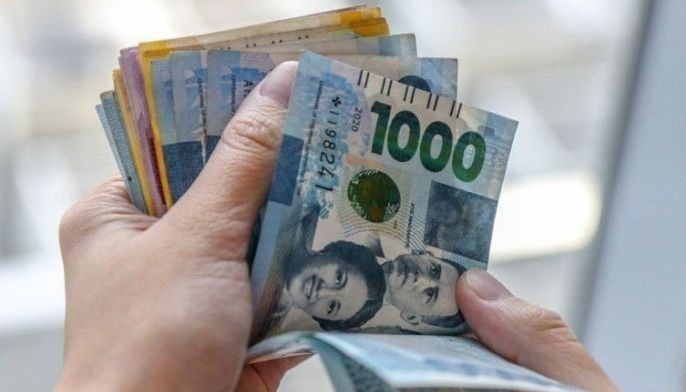MANILA, Philippines — The peso is likely to face less choppy waters in 2023 after emerging as one of the worst performing currencies in Asia this year when the external position of the Philippines deteriorated significantly, according to ANZ Research.
In its Asia FX Outlook 2023, “Ready to Rebound Even if Growth Slows,” ANZ Research said the peso is seen strengthening steadily to 55.50 in June next year to 55.20 in September and 55 in December from about 55.80 in March.
The appreciation would extend to 54.80 in March 2024 to 54.60 in June, 54.40 in September and 54.20 by end-December 2024.
“We forecast PHP to recover to 55 by the end of 2023. The key risks to our forecast are if import demand remains much stronger than expected, and the improvement in the external position fails to materialize as we forecast,” ANZ said.
After slumping by as much as 15.7 percent to hit an all-time low of 59 to $1 in October, the peso has bounced back to the 55 to $1 handle amid the series of rate hikes by the Bangko Sentral ng Pilipinas (BSP) as well as its intervention in the foreign exchange market to smoothen the volatility.
“In 2023, PHP will likely face less choppy waters as volatility stemming from US rate hikes will ebb. Several factors will be favorable for the currency. Firstly, the external sector dynamics are set to improve: global commodity prices have come off their peaks and higher domestic interest rates will curb import demand. This will help reduce the country’s large trade deficit,” it said.
However, ANZ warned that slowing export demand would be a major drag on the trade balance’s recovery in 2023.
It added that remittance flows from overseas Filipino workers (OFWs) and the business process outsourcing (BPO) industry are expected to stay robust over 2023, lending crucial support to the peso.
According to ANZ, the BSP is also prepared to match the rate hikes delivered by the US Federal Reserve, if needed.
“Hence, we do not expect significant downward pressure on the PHP if the Fed hikes more than expected,” ANZ said.
In 2022, the deterioration of the country’s current account position to historic lows posted the largest drag on the peso.
“Soaring prices of global commodities and robust domestic demand amid increased government spending stoked overall import growth, outpacing exports. As a result, the trade deficit reached historical highs in August, which exerted downward pressure on the currency,” ANZ said.
It said that remittance flows rose steadily over the year as the labor markets in key destination countries continued to improve in 2022, but these were insufficient to offset the rising trade deficit.
“To prevent an unchecked slide in the currency, the BSP has been hiking interest rates steadily and intervening in the FX market. Policymakers have also pledged to prevent the peso from weakening past 60 against the US dollar,” it said.
The central bank’s Monetary Board is widely expected to deliver another rate hike this month after raising key policy rates by 300 basis points, which brought the benchmark interest rate to a 14-year high of five percent from an all-time low of two percent.
This is aimed at bringing inflation to within the two to four percent target by the middle of next year after hitting a 14-year high of eight percent in November from 7.7 percent in October.


